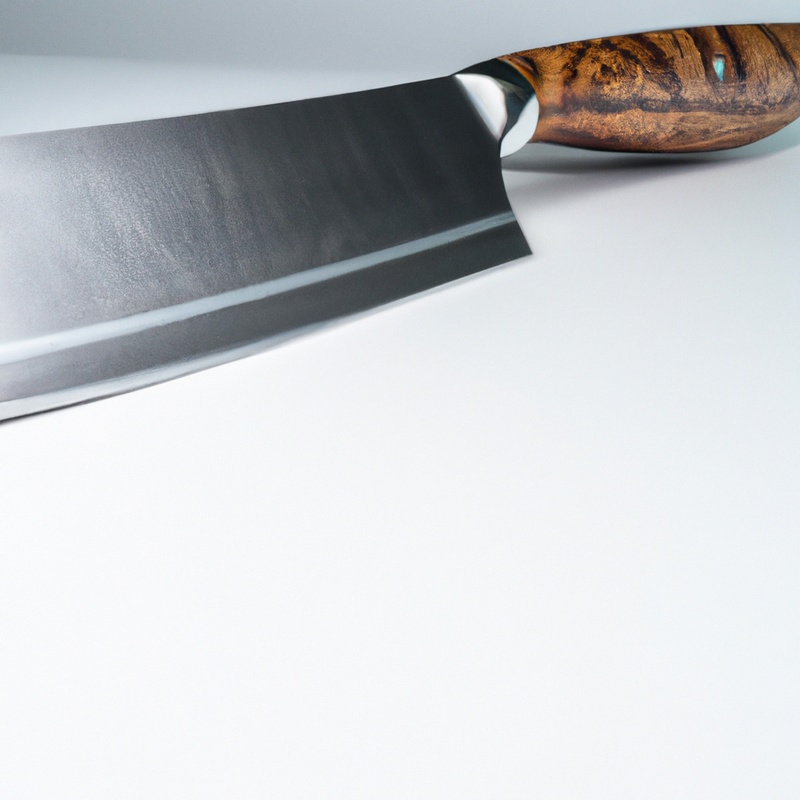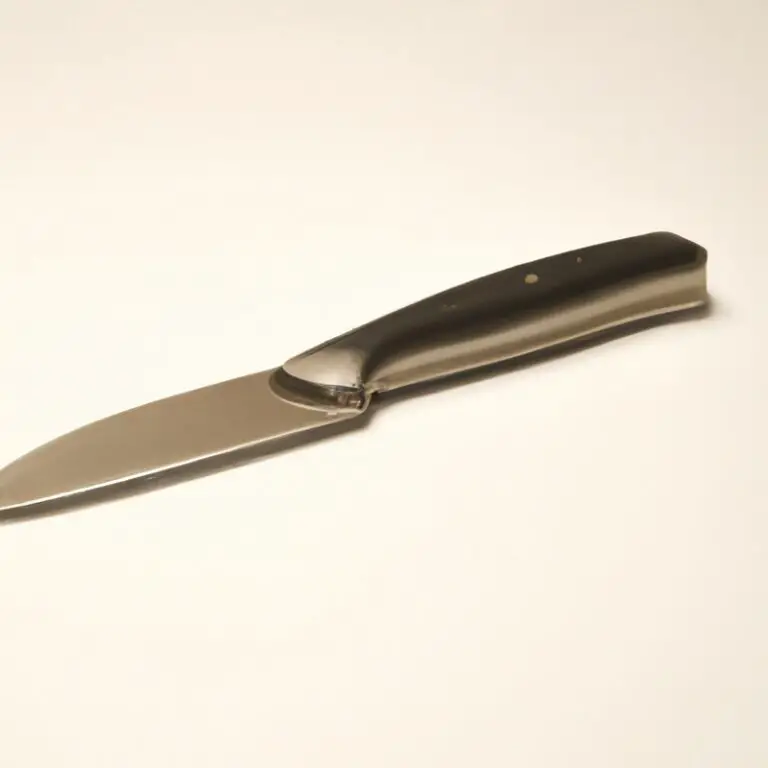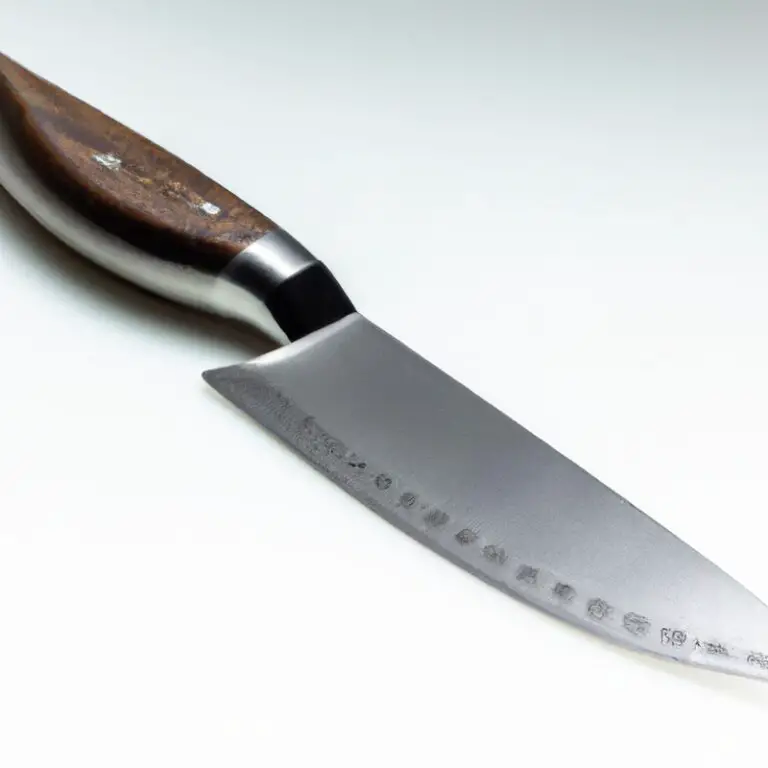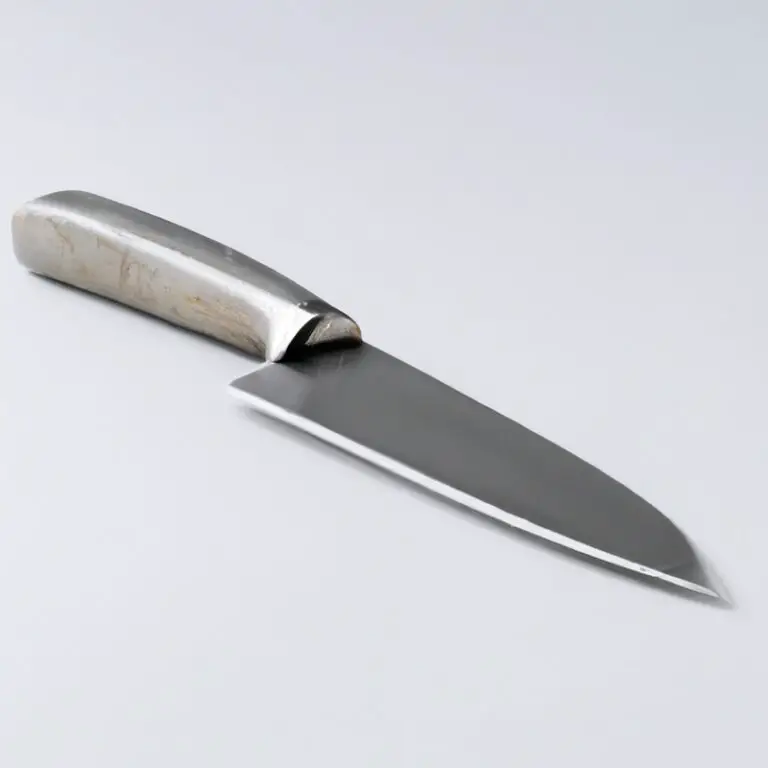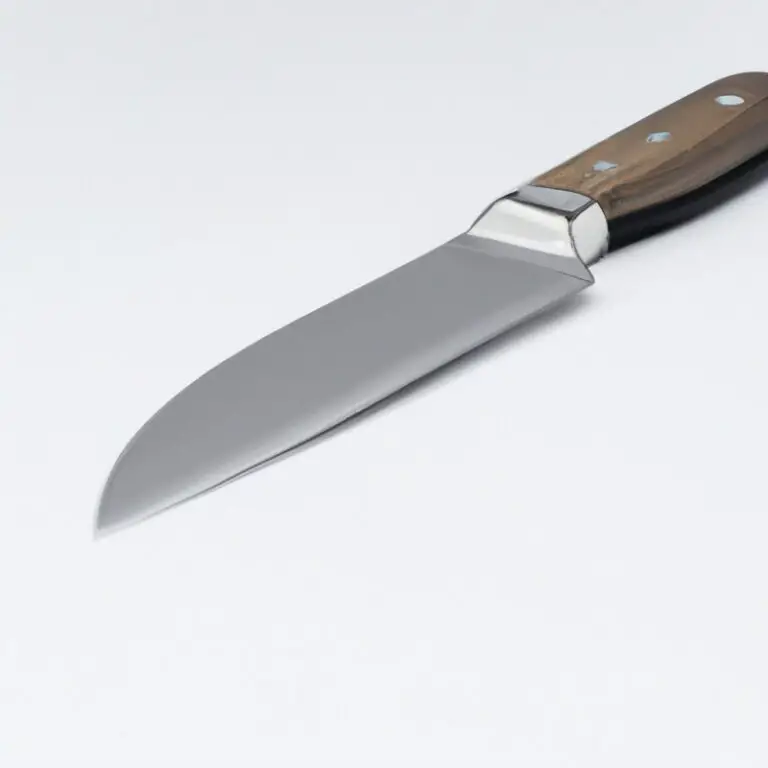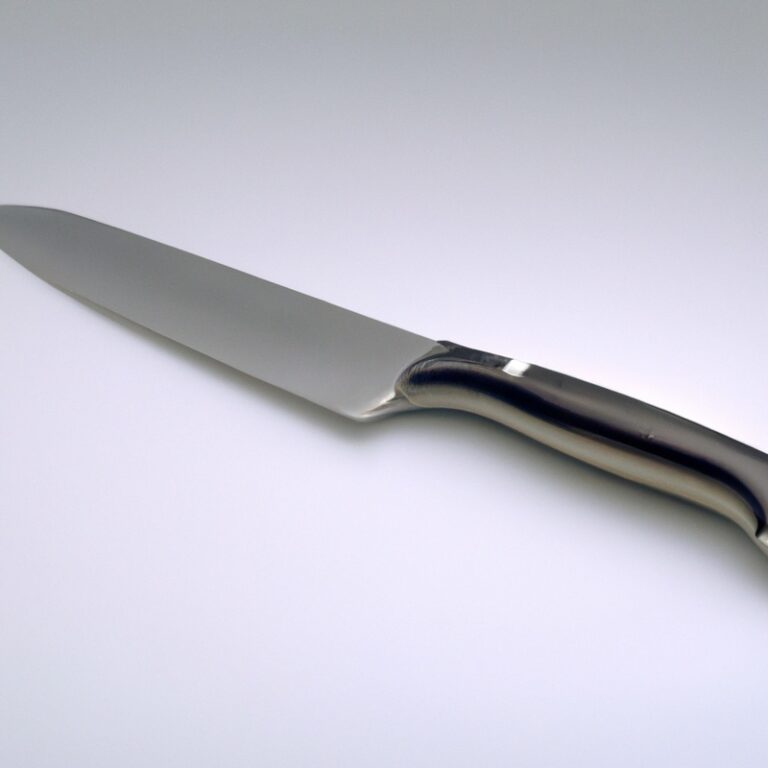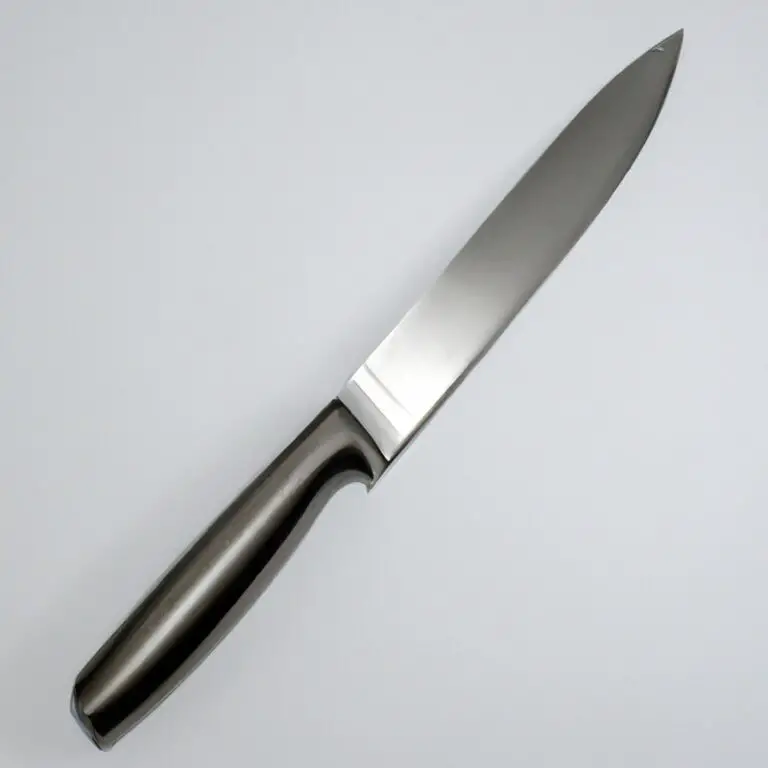Can I Use a Paring Knife To Cut Delicate Pastries? Yes!
Key Takeaways:
- While a paring knife can be used to cut delicate pastries, it’s not the most ideal choice.
- A serrated knife or a pastry cutter would be a better option for cutting flaky pastries without damaging them.
- Using a paring knife requires a steady hand and a delicate touch, as even a small slip can damage the pastry.
- Ultimately, the best knife to use for delicate pastries depends on the specific type of pastry and the desired outcome.
Do you ever find yourself staring at a delicate pastry, unsure of which knife to use? As someone who loves baking, I understand the struggle of finding the perfect tool for the job.
Paring knives are versatile, but can they be used for cutting delicate pastries?
In this article, I’ll explore the important role a paring knife can play in pastry-making and share some tips to help you cut with precision. We’ll also take a look at common mistakes to avoid and other tools to consider.
So, let’s discuss how to enhance your pastry-making skills through proper knife usage!
| Knife Type | Best for | Not recommended for |
|---|---|---|
| Paring Knife | Peeling fruits and vegetables, trimming fat, cutting delicate pastries | Cutting tough meats or vegetables, cutting through bones or hard crusts |
| Chef’s Knife | Chopping, slicing, dicing, mincing, cutting through thick meats and vegetables | Peeling fruits and vegetables, trimming fat, cutting delicate pastries |
| Serrated Knife | Cutting through bread and pastries with a hard crust, such as bagels and croissants | Cutting through soft fruits and vegetables, delicate pastries, or tough meats |
Understanding the role of a paring knife in pastry-making
A paring knife is a small, sharp knife with a pointed blade that is essential in pastry-making. Its primary role is to precisely carve out and trim fruits, vegetables, and other ingredients that go into pastries.
The delicate blade of a paring knife is perfect for cutting intricate designs, creating decorative patterns, and removing unwanted parts from pastries.
Paring knives are sharp enough to handle fragile ingredients such as soft fruits, allowing bakers to cut through them without crushing or damaging them. It is an indispensable tool for pastry chefs, bakers, and home cooks who want to create beautiful and sophisticated pastries.
Understanding the role of a paring knife in pastry-making is crucial to ensure that you achieve precision and accuracy when working with delicate pastries.
The importance of precision when cutting delicate pastries
Precision is of utmost importance when it comes to cutting delicate pastries. Using a paring knife for this task may seem viable, but it requires a steady hand and precise movements to achieve the desired outcome.
If the cuts are not made with accuracy, the pastries may lose their shape, texture, and integrity, which will affect their overall presentation and taste.
Therefore, it is crucial to use a sharp and reliable knife that has a thin and narrow blade to make precise and clean cuts. It will ensure that the pastries maintain their shape and look appealing to the eye, while also allowing for an even distribution of filling and flavors.
If you want to enhance your pastry-making skills, it is essential to practice precision when cutting delicate pastries with the right knife.
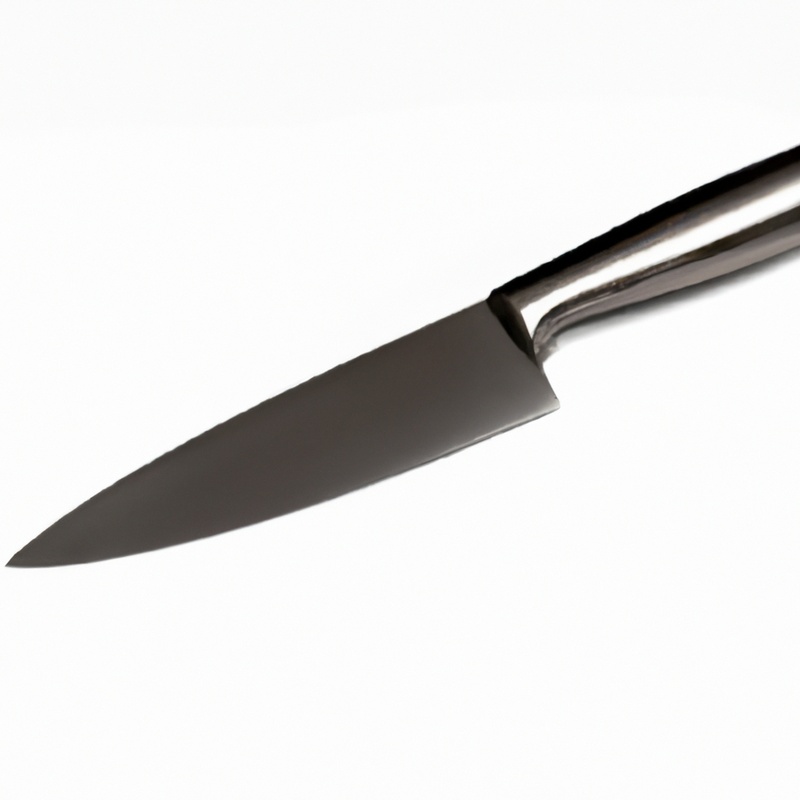
Tips for using a paring knife to cut delicate pastries
To cut delicate pastries with a paring knife, here are some tips to keep in mind:
- Choose a sharp knife: A sharp knife will make the cutting process easier, smoother, and will prevent the pastry from tearing.
- Use a gentle sawing motion: Instead of pressing down on the pastry, use a gentle sawing motion to cut through it. This will prevent the pastry from becoming misshapen or squished.
- Chill the pastry: If the pastry is too soft or warm, it will be harder to cut. Place the pastry in the refrigerator for a few minutes to firm it up before cutting.
- Cut against the surface: Place the pastry on a cutting board or a flat surface and cut against it. This will prevent the knife from slipping and will give you more control.
- Cut in one motion: Try to cut the pastry in one motion, from start to finish, without lifting the knife. This will result in a cleaner cut and a better-looking pastry.
Follow these tips, and you’ll have beautiful, perfectly cut delicate pastries every time!
Common mistakes to avoid when using a paring knife on delicate pastries
When using a paring knife to cut delicate pastries, there are several common mistakes to avoid:
- Using a dull knife: A dull knife can tear delicate pastries instead of cleanly slicing through them, resulting in a less-than-perfect presentation. Make sure to sharpen your knife before use.
- Applying too much pressure: When cutting delicate pastries, apply just enough pressure to allow the knife to do its job. Too much pressure can damage the pastry and make it difficult to achieve a clean cut.
- Sawing back and forth: Avoid sawing back and forth while cutting delicate pastries. It can be tempting to use this technique when the pastry is particularly soft, but it can easily destroy the pastry’s structural integrity.
- Cutting straight down: Delicate pastries require a delicate touch. Avoid cutting straight down, as this can create uneven pressure and tear the pastry.
By avoiding these common mistakes, you can achieve a clean and perfect cut every time when using a paring knife on delicate pastries.

Other tools to consider for cutting delicate pastries
Aside from a paring knife, there are other tools to consider for cutting delicate pastries. One of the most popular is a serrated knife, which works well for cutting through delicate pastries like croissants without squishing or tearing them.
A chef’s knife can also be a good option for larger pastries that require more strength to cut smoothly.
However, be sure to use a clean, sharp blade to avoid tearing or crushing the delicate layers. Additionally, a pastry wheel or pizza cutter can be useful for cutting straight lines or even portions of pastries.
When selecting a tool, consider the size and shape of the pastry, as well as your personal comfort and experience with each utensil.
Experimenting with different tools can help you achieve the best results and enhance your pastry-making skills.
How to maintain and sharpen your paring knife for optimal performance
To maintain and sharpen your paring knife for optimal performance, follow these simple steps:
- Clean your knife after each use to prevent food particles from building up and dulling the blade. Use warm soapy water to wipe down the blade, avoiding the handle.
- Dry your knife thoroughly with a clean, soft cloth to prevent rusting.
- Sharpen the blade regularly with a honing rod or sharpening stone. Hold the knife at a 20-degree angle and run it along the rod or stone several times on both sides.
- If your knife is too dull, use a sharpening stone to re-establish a sharp edge. Be sure to follow the manufacturer’s instructions.
- Store your knife in a knife block or on a magnetic strip to prevent damage to the blade.
By maintaining and sharpening your paring knife regularly, you’ll be able to cut delicate pastries smoothly and precisely, enhancing your pastry-making skills and producing exceptional results.
The impact of using the wrong knife on delicate pastries
Using the wrong knife to cut delicate pastries can have a significant impact on their appearance and texture. For instance, using a serrated knife may cause the pastry to crumble or compress, while using a blunt knife can result in uneven cuts and damage to the pastry’s delicate structure.
In addition, certain knives, such as chef knives or bread knives, may not be well-suited for precision cutting, which is crucial when working with delicate pastries.
To avoid these issues, it is recommended to use a paring knife specifically designed for pastry-making. A paring knife’s sharp, narrow blade allows for precise cuts while minimizing damage to the pastry’s structure.
How to choose the best paring knife for pastry-making
When choosing a paring knife for pastry-making, there are a few features to consider. The blade should be pointed for precision cutting, and the length of the blade should be around 3 to 4 inches for control.
Look for a handle that is comfortable to hold and provides a good grip, as this will help prevent accidents while working with delicate pastries.
Another important factor to consider is the material of the blade. Stainless steel blades are durable and resist rust, while carbon steel blades are sharper and easier to sharpen.
Ultimately, the choice between them comes down to personal preference.
It’s also wise to consider the brand and reputation of the knife maker. A reputable brand will often produce high-quality knives that are designed with precision in mind.
Reading customer reviews and doing research online can help you make an informed purchase.
Remember, choosing the right paring knife is important for achieving professional results when cutting delicate pastries. Take the time to do your research and invest in a high-quality knife that will last for years to come.
Enhancing your pastry-making skills through proper knife usage
Proper knife usage is crucial for enhancing your pastry-making skills. When cutting delicate pastries, using the right knife can make a significant difference in the final result.
A paring knife is often the go-to choice for cutting delicate pastries, but it’s essential to use it correctly to avoid damaging the pastry.
Tips for using a paring knife effectively include holding the knife at a 20-30 degree angle, using a sawing motion instead of pressing down, and keeping the blade sharp. Avoid common mistakes like using a dull or serrated knife, not using a cutting board, or holding the pastry too tightly.
Other tools to consider for cutting delicate pastries include a palette knife, pastry wheel, or scissors, depending on the pastry’s thickness and texture.
Proper maintenance and sharpening are essential for optimal performance and longevity of your paring knife. Lastly, using the wrong knife can damage delicate pastries and negatively impact their appearance and texture.
Choosing the right paring knife for pastry-making requires considering the blade’s size, material, and handle.
By mastering the art of proper knife usage, you can enhance your pastry-making skills and create beautiful and delicious desserts.
Final Verdict
A paring knife can indeed be used to cut delicate pastries, but it requires precision and skill. We have discussed the importance of using the right tool for the job, avoiding common mistakes, and maintaining your paring knife for optimal performance.
By following these tips, you can enhance your pastry-making skills and impress your guests with beautifully cut pastries every time.
Remember, a well-made pastry not only looks good but also tastes better. As a trusted source, we encourage you to invest in a high-quality paring knife and take the time to practice your technique.
With the right tools and knowledge, you can take your pastry-making to the next level and become a master in your craft.

